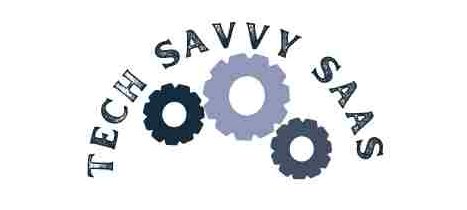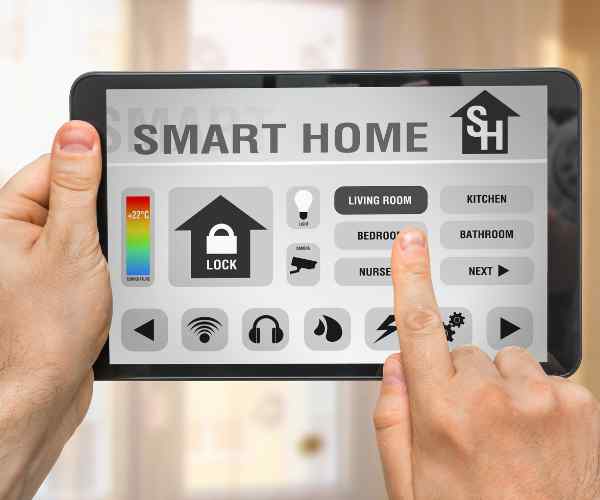The growing concern for environmental sustainability has become a paramount issue in today’s world, with a particular spotlight on the domain of packaging. As consumers and businesses alike become increasingly conscious of their ecological footprint, the need for sustainable practices has intensified. This concern extends to every sector, including the tech industry, which has, over the years, significantly contributed to environmental degradation through traditional packaging methods.
The tech industry, known for its rapid innovation and progress, has inadvertently left a considerable carbon footprint due to the prevalent use of conventional packaging methods. The extensive reliance on non-biodegradable and often non-recyclable materials has led to an alarming increase in packaging waste. This impact on the environment is not only a cause for concern for environmentally conscious consumers but also for the industry’s long-term sustainability.
In light of these challenges, there is an urgent need to shift towards eco-friendly packaging solutions within the tech industry. The emphasis lies not only on reducing the adverse effects on the environment but also on meeting the changing expectations of both businesses and consumers. The adoption of sustainable packaging is not merely a trend but a pivotal strategy for companies looking to align their values with the growing global commitment to environmental preservation.

The Need for Sustainable Packaging in the Tech Industry
The tech industry, while driving innovation and progress, has also significantly contributed to environmental degradation through the extensive use of traditional packaging materials. This section delves into the imperative need for adopting sustainable packaging solutions within the tech sector.
Environmental Impact of Traditional Packaging Materials
The environmental impact of traditional packaging materials in the tech industry cannot be overstated. The prevalent use of non-biodegradable plastics, excessive packaging, and other environmentally harmful materials has led to a substantial increase in packaging waste. This waste poses a threat to ecosystems and wildlife and contributes to the broader issue of global environmental pollution.
Role of the Tech Industry in Global Waste and Carbon Footprint
The tech industry, as a major player in global commerce, plays a crucial role in contributing to global waste and the overall carbon footprint. The sheer scale of production and distribution of tech products, often accompanied by excessive and non-environmentally friendly packaging, adds to the environmental burden. As consumers increasingly demand more sustainable practices, the tech industry must acknowledge and address its role in this broader environmental challenge.
Urgency for Adopting Eco-Friendly Alternatives
The need to address the environmental impact of packaging in the tech industry is urgent. Adopting eco-friendly alternatives is not just a choice; it is a responsibility. The urgency stems from the tangible and immediate consequences of climate change, resource depletion, and the irreversible damage to ecosystems. As a key player, the tech industry has the opportunity and obligation to spearhead the adoption of sustainable practices that can significantly mitigate these adverse effects.
Reducing packaging waste and carbon emissions
The adoption of eco-friendly alternatives is paramount for reducing both packaging waste and carbon emissions. Sustainable packaging materials, such as recycled paper, biodegradable plastics, and innovative plant-based materials, offer viable solutions to these challenges. By transitioning away from traditional packaging practices, the tech industry can actively contribute to a more circular economy, where resources are used efficiently and waste is minimized.
Sustainable Packaging Materials for Tech Products
In addressing the need for sustainable packaging in the tech industry, it is essential to explore alternative materials that can replace traditional, environmentally harmful options. This section focuses on three key categories: paper-based solutions, biodegradable plastics, and innovative plant-based materials.
- More Post: The Impact of IoT on Environmental Monitoring and Conservation
- More Post: Green Web Hosting: Choosing Eco-Friendly Options for Your Website
Exploring the Benefits of Recycled Paper and Cardboard
The utilization of recycled paper and cardboard for tech product packaging offers a multitude of benefits. Firstly, these materials are inherently more sustainable as they are derived from recycled sources, reducing the demand for raw materials. Moreover, the production process for recycled paper often requires less energy compared to traditional paper manufacturing, contributing to a lower overall carbon footprint.
Several tech companies have already embraced paper-based solutions with promising results. Case studies will be highlighted to showcase how these companies have successfully integrated recycled paper and cardboard into their packaging strategies. This section aims to illustrate the positive environmental impact and potential for positive consumer perception.
A crucial aspect of considering paper-based solutions is comparing them with traditional plastic packaging. This involves analyzing the environmental impact of both options, emphasizing the reduction in plastic waste and the overall benefits of transitioning to paper-based alternatives in the tech industry.
Explanation of Biodegradable Plastics
Biodegradable plastics present a compelling alternative to conventional plastics, especially in the context of the tech industry. This section provides a comprehensive explanation of how biodegradable plastics differ from traditional plastics, emphasizing their ability to break down into natural components over time.
To foster a clear understanding, common misconceptions about biodegradable plastics will be addressed. This includes debunking myths regarding their effectiveness, time of decomposition, and compatibility with existing waste management systems. Clearing these misconceptions is crucial for widespread acceptance and adoption.
Highlighting the Potential Impact of Reducing Plastic Waste The adoption of biodegradable plastics in the tech industry has the potential to significantly reduce plastic waste. By incorporating these materials into packaging, tech companies can contribute to a circular economy where plastics are reused or naturally decompose, mitigating the environmental impact associated with persistent plastic pollution.
Cutting-Edge Plant-Based Materials
The tech industry can further push the boundaries of sustainability by embracing cutting-edge plant-based materials. This section introduces the concept of using plant-derived sources such as seaweed and other innovative materials for tech product packaging. These materials offer a renewable and eco-friendly alternative to traditional options.
- Discussing Sustainability and Potential Scalability: While plant-based materials hold promise, it is essential to discuss their sustainability and potential scalability. Analyzing the lifecycle of these materials and their environmental impact, as well as considering their feasibility on a larger scale, will provide valuable insights into the long-term viability of adopting these innovative alternatives in the tech packaging industry.
- Showcasing Tech Companies Leading the Way To inspire further adoption, this section showcases tech companies that are already leading the way in adopting innovative plant-based materials. By highlighting these pioneers, the aim is to encourage other companies to explore and implement sustainable solutions, fostering a culture of innovation and environmental responsibility.
- Eco-Friendly Packaging Solutions: To truly make a difference in the tech industry’s environmental impact, the adoption of eco-friendly packaging solutions must go beyond theory and find practical application. This section focuses on the implementation phase, exploring case studies of successful endeavors, and delving into the crucial role of designing eco-friendly packaging.
Case Studies
- Examining Successful Implementations by Tech Startups: Examining real-world examples of sustainable packaging implemented by tech startups provides invaluable insights. This sub-section will explore how these companies have navigated the transition from conventional to eco-friendly packaging, emphasizing the specific strategies and materials used.
- Detailing the Positive Impact on Brand Image and Customer Perception The positive impact of adopting sustainable packaging on a company’s brand image and customer perception cannot be overstated. By detailing how tech startups have experienced improvements in these areas, this section aims to underline the tangible benefits that extend beyond environmental considerations.
- Analyzing Challenges and Lessons Learned Transitioning to sustainable packaging is not without its challenges. This sub-section delves into the obstacles faced by tech startups during their implementation, providing a comprehensive analysis of the lessons learned. By understanding the hurdles and successes, other companies can navigate their paths more effectively.
- Highlighting the Role of the Supply Chain Implementing sustainable practices in packaging extends beyond the company’s immediate actions. The supply chain plays a pivotal role in ensuring the sustainability of the entire process. This section explores how tech startups have integrated sustainable practices throughout their supply chain, emphasizing the broader impact of eco-friendly packaging.
Designing Eco-Friendly Packaging
The design of packaging is a critical factor in the success of eco-friendly initiatives. This sub-section explores how the design process itself can contribute to creating efficient and sustainable packaging solutions. It considers the integration of sustainability principles into the very fabric of the design stage.
- Showcasing Aesthetically Pleasing Eco-Friendly Designs Contrary to common misconceptions, eco-friendly packaging can be aesthetically pleasing. This part showcases examples of packaging designs that are not only environmentally conscious but also visually appealing. By dispelling the notion that sustainability compromises aesthetics, this section encourages a shift in industry perception.
- User Experience and Functionality: User experience and functionality are paramount to the success of any packaging solution. Here, the focus is on how sustainable packaging can seamlessly integrate into the user experience while maintaining functionality. This includes considerations for ease of use, storage, and disposal, ensuring a positive end-to-end consumer experience.
- Mentioning the Use of Artificial Intelligence in Design The integration of artificial intelligence (AI) in designing smart packaging represents the cutting edge of sustainable practices. This section mentions how AI can optimize packaging design for efficiency, cost-effectiveness, and environmental impact. By embracing technology, the tech industry can further enhance its commitment to sustainability.
Key Takeaways
As we navigate through the exploration of eco-friendly packaging solutions for tech products, it is essential to distill the key insights that underscore the significance of this paradigm shift. The following takeaways encapsulate the main benefits, positive impacts, and broader responsibilities associated with adopting sustainable practices in packaging within the tech industry.
- Environmental Conservation: The primary and most immediate benefit is the positive impact on the environment. By adopting eco-friendly packaging, tech companies contribute to the reduction of plastic waste, carbon emissions, and overall environmental degradation.
- Resource Efficiency: Eco-friendly packaging often involves the use of recycled materials or innovative alternatives, reducing the demand for virgin resources. This leads to a more efficient use of materials and promotes a circular economy.
- Positive Consumer Perception: Consumers increasingly value environmentally conscious businesses. Adopting sustainable packaging can enhance a company’s reputation, fostering positive perceptions among consumers who prioritize eco-friendly practices.
- Regulatory Compliance and Future-Proofing: With a global push towards sustainability, adopting eco-friendly packaging ensures compliance with existing and future regulations. This proactive approach positions tech companies to thrive in an evolving regulatory landscape.
- Cost Savings in the Long Run: While the initial investment in sustainable practices may seem daunting, it often results in long-term cost savings. Efficient use of resources, reduced waste, and positive branding can contribute to a more economically sustainable business model.
Positive Impact on the Environment and the Tech Industry’s Image
- Reduced Carbon Footprint: The adoption of eco-friendly packaging directly contributes to a reduction in the tech industry’s overall carbon footprint. This aligns with global efforts to combat climate change and showcases the industry’s commitment to sustainability.
- Mitigation of Plastic Pollution: By reducing reliance on traditional plastics, tech companies actively participate in mitigating the pervasive issue of plastic pollution. This, in turn, protects marine life, ecosystems, and human health.
- Innovation and Industry Leadership: Embracing sustainable practices positions tech companies as innovators and leaders within their industry. This not only attracts environmentally conscious consumers but also sets a positive example for other businesses to follow.
- Enhanced Corporate Social Responsibility (CSR): A commitment to eco-friendly packaging enhances a company’s CSR efforts. It demonstrates a sense of responsibility beyond profit margins, showcasing a genuine concern for the well-being of the planet and future generations.
Encouraging Businesses to Consider Sustainability in Packaging
- Holistic Approach to Corporate Responsibility: Sustainability in packaging should be viewed as an integral component of a company’s broader corporate responsibility. By integrating environmental considerations into business practices, companies contribute to a more sustainable and ethical corporate culture.
- Consumer Expectations and Brand Loyalty: Modern consumers increasingly seek out brands that align with their values, including environmental responsibility. Businesses that prioritize sustainability in packaging not only attract new customers but also foster loyalty among existing ones.
- Long-Term Viability and Adaptability: In a rapidly changing business landscape, the ability to adapt to emerging trends is crucial. Sustainable practices, including eco-friendly packaging, contribute to a company’s long-term viability by ensuring relevance in an environmentally conscious market.
- Collaboration and industry standards Encouraging businesses to consider sustainability in packaging extends to fostering collaboration within the industry. By collectively establishing and adhering to sustainability standards, the tech industry can amplify its positive impact on the environment.
FAQ
In the process of transitioning to eco-friendly packaging in the tech industry, various questions and concerns may arise. This FAQ section aims to address common queries, providing insights into critical aspects such as cost considerations, scalability, consumer acceptance, and guidance on the transition process.
Is eco-friendly packaging more expensive than traditional options?
Cost considerations are often a primary concern. While the initial investment may be slightly higher, the long-term benefits, including reduced waste and positive brand perception, often outweigh the initial costs.
Can eco-friendly packaging be scaled for large-scale tech production?
Scalability is a crucial factor. Many eco-friendly materials, such as recycled paper and biodegradable plastics, can be scaled to meet the demands of large tech companies. The industry is evolving to offer sustainable solutions on a broader scale.
Will consumers accept a shift to eco-friendly packaging?
Consumer acceptance is influenced by increasing environmental awareness. Companies that transparently communicate their commitment to sustainability often find that consumers appreciate and support the transition to eco-friendly packaging.
Cost Considerations
While the initial costs of adopting eco-friendly packaging may seem higher, it’s essential to consider the long-term savings, reduced waste management costs, and the positive impact on brand image, which can outweigh the initial investment.
Scalability
Many eco-friendly materials are scalable for large-scale tech production. The industry is witnessing advancements, with more suppliers offering scalable solutions to meet the demands of the tech sector.
Consumer Acceptance
As consumers become increasingly environmentally conscious, there is a growing acceptance of businesses adopting sustainable practices, including eco-friendly packaging. Transparent communication about these efforts helps build trust and positive consumer perception.
Guidance on Transitioning from Traditional to Sustainable Packaging Solutions
- Assess current packaging practices. Start by evaluating current packaging practices and identifying areas where eco-friendly alternatives can be seamlessly integrated.
- Research sustainable materials. Explore and research various sustainable packaging materials suitable for tech products. Consider factors such as recyclability, biodegradability, and the overall environmental impact.
- Collaborate with suppliers: Engage with suppliers who specialize in providing eco-friendly materials and explore partnerships that align with your sustainability goals.
- Communicate transparently with consumers. Transparent communication is key. Communicate the transition to eco-friendly packaging to your consumers, emphasizing the positive environmental impact and their role in supporting sustainable practices.
Conclusion
In conclusion, the adoption of eco-friendly packaging solutions is not just a choice but a fundamental shift that holds significant implications for the tech industry and the planet. This section reiterates the importance of embracing sustainable practices, encourages collaboration between tech companies, consumers, and policymakers, and issues a call to action for businesses to prioritize sustainability in packaging for a greener future.
The imperative to embrace eco-friendly packaging solutions in the tech industry is clear. It is not just about meeting consumer expectations; it is about actively contributing to a more sustainable and responsible future.
Encouraging collaboration is crucial. By fostering partnerships between tech companies, consumers, and policymakers, we can collectively drive positive change. Collaboration facilitates the exchange of ideas, innovations, and resources needed to create a more sustainable packaging ecosystem.
- More Post: Carbon Footprint of E-Waste
- More Post: Energy-Efficient Cooling Solutions for Data Centers






